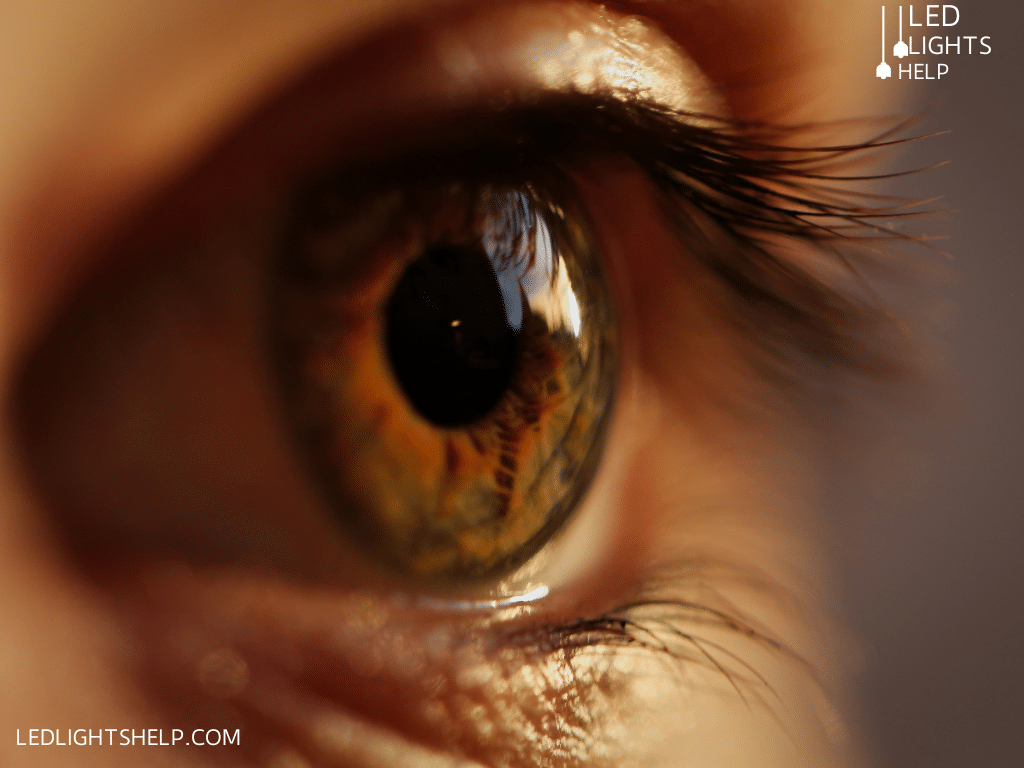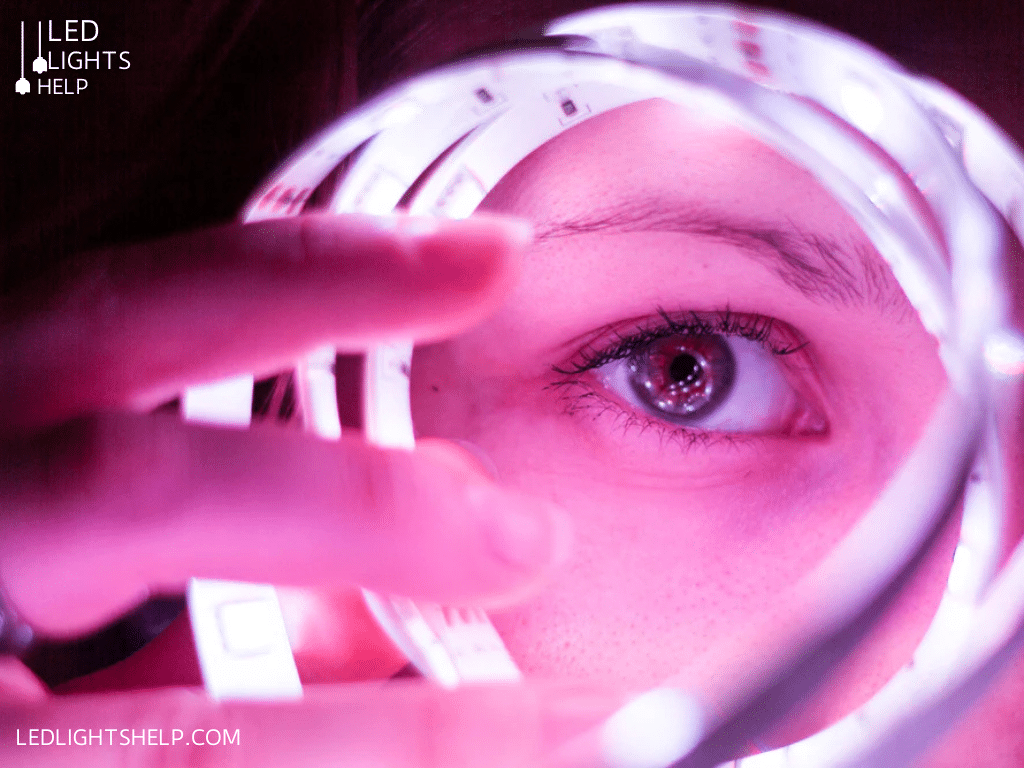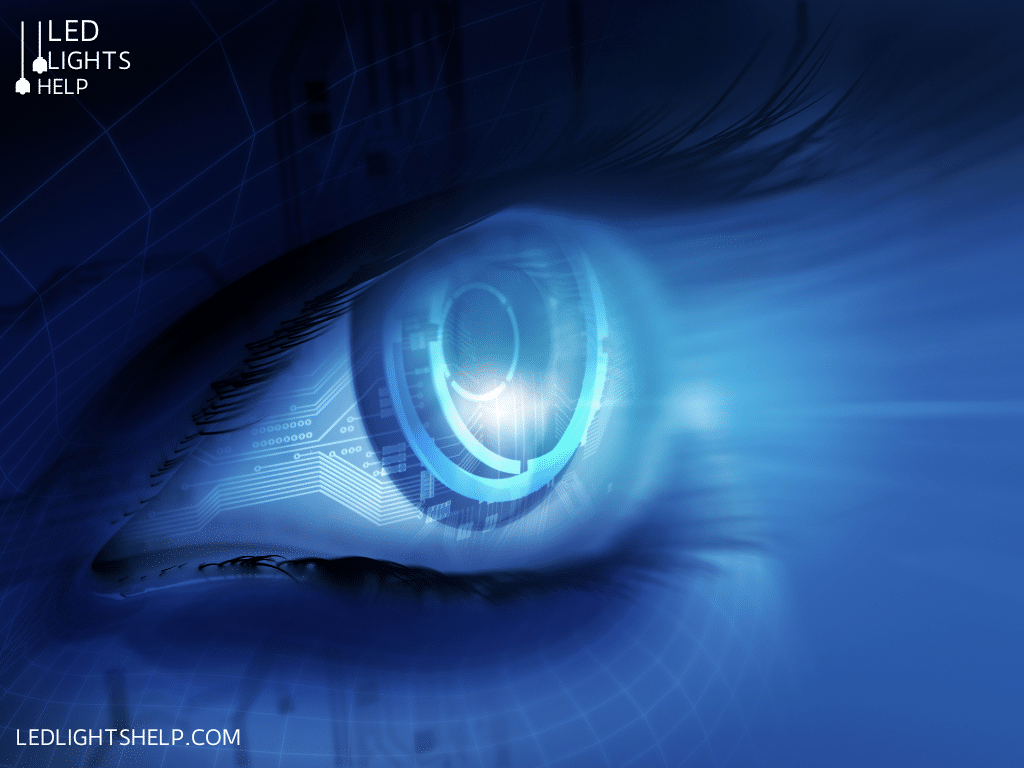Table of Contents
LED lights are designed to brighten homes, offices, and workspaces with their energy-efficient brilliance while contributing to a sustainable environment. They offer versatility, style, and functionality, whether creating a cozy ambiance or a productive workstation.
However, have you ever wondered if LED lights could be harmful to your eyes?
The answer is yes—LEDs emit more blue light than traditional sources, and prolonged exposure can cause headaches and potential long-term vision issues. In a world where screen time is unavoidable, understanding these risks is crucial. This article explores the impact of LED light on eye health, the science behind it, and practical tips to minimize potential harm, helping you make informed lighting choices for greater comfort and well-being.
Understanding LED Light and Eyes Health

Let’s first discuss the understanding of LED lights and your eyes health in the following detailed points;
The Effects of Blue Light
Blue light, which has a shorter wavelength and more energy than other colors in the spectrum, is emitted in large quantities by LED lights. Because of this property, blue light can potentially reach the retina by penetrating the eye more deeply. Prolonged exposure to blue light has been associated with several health issues:
Eye Strain: Blue light scatters more easily than other visible light, which can cause reflections and reduce contrast. This effect can lead to digital eye strain, characterized by discomfort, dryness, and difficulty focusing.
Disruption of Sleep Patterns: Blue light exposure, especially in the evening or at night, may reduce melatonin production. A hormone that regulates sleep-wake cycles. Decreased melatonin levels can cause irregular sleep patterns and trouble falling asleep, which can be factors to long-term sleep disorders.
Potential Long-term Eye Damage: Some studies suggest that prolonged exposure to blue light may contribute to retinal damage over time. However, more research is needed to understand this potential risk fully.
Impact on Circadian Rhythms
Natural light signals have an impact on our circadian rhythms, which in turn assist in controlling our sleep-wake cycles, by blocking the generation of melatonin and exposure to blue-rich white light. Like that produced by LED lights might throw off these rhythms. This interruption may have serious consequences:
Sleep disturbances: One common effect of blue light exposure in the evening disrupting circadian rhythms is difficulty sleeping or staying asleep.
Daytime Fatigue: Daytime fatigue resulting from poor sleep quality due to circadian disruption can have profound impacts on daily life. It frequently shows up as decreased mental agility, trouble focusing on tasks, and generalized decreased well-being. Fatigue lowers quality of life by affecting mood and energy levels throughout the day.

LED technology has many benefits, such as durability and energy economy, but it also has drawbacks.
Light pollution is a phenomenon that impacts not only astronomical observations but also ecosystems and human health. It is mostly caused by artificial light that is either excessive or misdirected. People who are exposed to bright evening lighting may experience discomfort. Also, sleep difficulties are aggravated due to light pollution from LEDs.
Reducing Risks and Ensuring Eye Safety
A number of tactics can be used to reduce the possible risks connected to LED lighting:
Use of Filters and Protective Eyewear: Specialized filters that reduce blue light emission can be applied to LED screens and light fixtures. Furthermore, limiting direct exposure to hazardous wavelengths can be achieved by donning protective eyewear that is made to block or filter blue light.
Changing Lighting: You can lessen the impact of blue light on circadian rhythms by using warmer color temperatures and dimming LED lights at night. Warm-colored light sources, such as those with a color temperature below 3000K, are less likely to suppress melatonin production compared to cooler, bluer light.
Screen Time Management: Limiting overall screen time, particularly exposure to devices like smartphones, tablets, and computers that emit blue light, can lessen the strain on the eyes and promote better sleep hygiene.
Choosing High-Quality LED Products: Look for LED lights and fixtures that have color-adjusting and built-in dimmers. With these features, lighting can be tailored to have the least impact on circadian cycles and eye health.

Conclusion
LED lights offer energy-efficient and adaptable lighting for homes and offices, but they also raise eye health concerns. Unlike traditional lighting, LEDs emit more blue light, which can cause eye strain, sleep disturbances, and long-term vision issues.
To minimize these effects, consider using blue light filters, warmer tones, dimmable LEDs, and managing screen time. Prioritizing eye safety and circadian rhythm balance allows you to enjoy LED benefits while reducing risks.As technology evolves, ongoing research and awareness will help establish standards that support both efficient lighting and optimal eye health, ensuring safer illumination for all.


